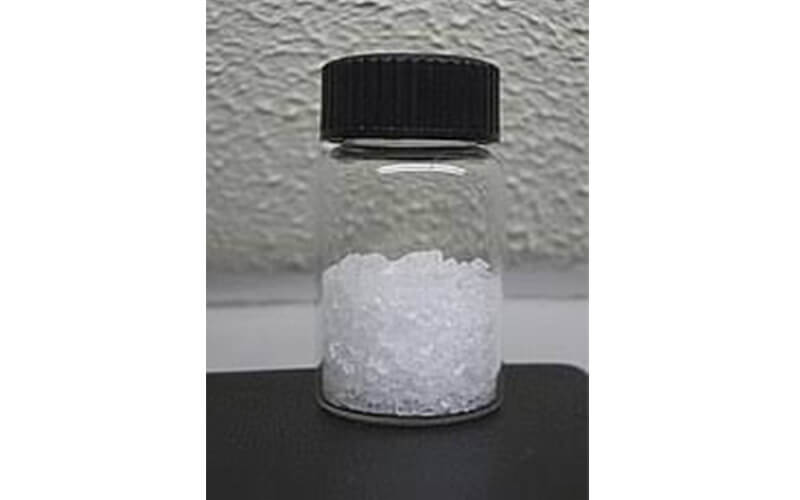Sodium Sulfate Melting Point
Why It Matters
Sodium sulfate is a fascinating compound with countless applications across various industries. From its role in producing detergents to its importance in glass manufacturing, this compound is more than just a simple chemical. Today, we’ll explore one specific property—the melting point of sodium sulfate—and why it has such practical significance.
| Section | Information |
|---|---|
| Chemical Name | Anhydrous Sodium Sulfate (Chemical Formula: Na₂SO₄) |
| Synonyms | Glauber’s Salt, Sodium Sulfate Anhydrous, Anhydrous Sodium Sulphate, Sodium Sulfate Dehydrate |
| Molecular Weight | 142.04 g/mol |
| Appearance | White crystalline powder or granules |
| Odor | Odorless |
| Melting Point | 884°C (1623°F) |
| Boiling Point | 1429°C (2604°F) |
| Density | 2.68 g/cm³ (at 25°C) |
| Solubility | Soluble in water, insoluble in ethanol |
| Stability | Stable, hygroscopic |
| Hazardous Properties | Low toxicity; may cause irritation to eyes and skin |
| Storage Conditions | Store in a cool, dry, and well-ventilated area; keep away from acids, reducing agents, and organic materials |
| Packaging | Polyethylene-lined woven bags or cardboard boxes |
| Transportation Requirements | Protect from moisture and rain; keep dry |
| First Aid Measures | Skin contact: Wash with plenty of water; Eye contact: Rinse immediately with water |
| Spill Response | Prevent from entering water bodies; absorb with sand, collect, and dispose of properly |
| Safety Symbols | S24/25: Avoid contact with skin and eyes |
| Main Uses | Chemical raw material, drying agent, dehydrating agent, glass manufacturing, papermaking, textile industry, etc. |

What Is Sodium Sulfate?
Sodium sulfate, sometimes referred to as Glauber’s salt in its decahydrate form, is an inorganic compound with a surprisingly versatile set of uses. It appears as a white crystalline solid or powder and is widely found both as a natural resource and as a manufactured product.
Chemical Composition and Structure
Chemically represented as Na₂SO₄, sodium sulfate is made up of two sodium ions (Na⁺) and one sulfate ion (SO₄²⁻). It belongs to the group of sulfate salts and is classified as an inorganic compound. Its anhydrous form (without water) and decahydrate form (containing water molecules) are most commonly used in industrial applications. For more insight into its chemical structure, you can visit PubChem.
Industrial and Everyday Applications
Sodium sulfate is a cornerstone of industries worldwide. It plays an essential role in the manufacturing of detergents, providing bulk and ensuring the efficient action of active ingredients. It’s also used in paper pulping processes as a filler. Moreover, sodium sulfate is a key component in the production of glass, helping refine molten glass by removing air bubbles. More on its versatility can be explored on American Elements.
Physical and Chemical Properties of Sodium Sulfate
Understanding the properties of sodium sulfate helps explain how and why it’s used so widely, especially in industrial operations.
Thermal Properties
Sodium sulfate exhibits thermal stability and is capable of maintaining its structural integrity up to high temperatures. Its anhydrous version melts at 884°C (1623.2°F). This high melting point makes sodium sulfate an ideal candidate for applications requiring exposure to significant heat. You can find more details about its thermal characteristics on Wikipedia.
Solubility and Hygroscopicity
Sodium sulfate is highly soluble in water, making it easy to integrate into various processes. It also demonstrates hygroscopic behavior, meaning it can absorb moisture from the air. This property is particularly relevant in its decahydrate form, which can lose water upon heating.
Sodium Sulfate’s Melting Point and Its Significance
The melting point of sodium sulfate isn’t just a scientific curiosity—it’s a vital characteristic that directly impacts its practical applications.
Determining the Melting Point
Sodium sulfate’s melting point stands at 884°C (1623.2°F) in its anhydrous form. The decahydrate version behaves differently, as it undergoes a phase change at a much lower temperature (32.38°C), where it sheds its water molecules. The anhydrous compound’s high melting point is determined using precise laboratory techniques, such as differential scanning calorimetry.
Melting Point in Industrial Applications
In glass manufacturing, sodium sulfate’s incorporation at high temperatures helps remove impurities, utilizing its melting point to refine the final product. Similarly, in thermal energy storage systems, sodium sulfate is used as a phase-change material, storing energy at specific temperature thresholds. Explore its industrial relevance further on Sigma-Aldrich.
Comparison With Similar Compounds
Compared to other sulfates like calcium sulfate or magnesium sulfate, sodium sulfate boasts a more moderate melting point. For instance, calcium sulfate has a higher melting point of approximately 1460°C, making sodium sulfate more suitable for applications involving moderate thermal ranges.
Factors Influencing Sodium Sulfate’s Thermal Behavior
Certain factors can influence the melting point or overall thermal behavior of sodium sulfate, affecting its performance in industrial applications.
Impurities and Their Impact
Impurities within sodium sulfate can significantly lower its melting point. For example, the presence of other salts might disrupt the crystalline structure, making it melt at a lower temperature. This is a critical consideration for manufacturers to guarantee product quality.
Pressure and Environmental Conditions
Pressure can also play a role in altering the melting point. Under normal atmospheric conditions, the anhydrous form of sodium sulfate melts predictably at 884°C. However, at higher pressures, the thermal behavior may shift slightly, which could influence its application in specialized environments like thermal insulation systems.
Conclusion
Sodium sulfate might seem like a simple chemical, but its remarkable properties, particularly its melting point, underscore its importance across various industries. From aiding glass production to contributing to energy storage systems, the high melting point of sodium sulfate makes it indispensable in applications requiring stability under extreme temperatures. Understanding these properties ensures that industries can continue to harness its potential effectively. If you want to learn more about its properties and applications, visit resources like ICSC.






